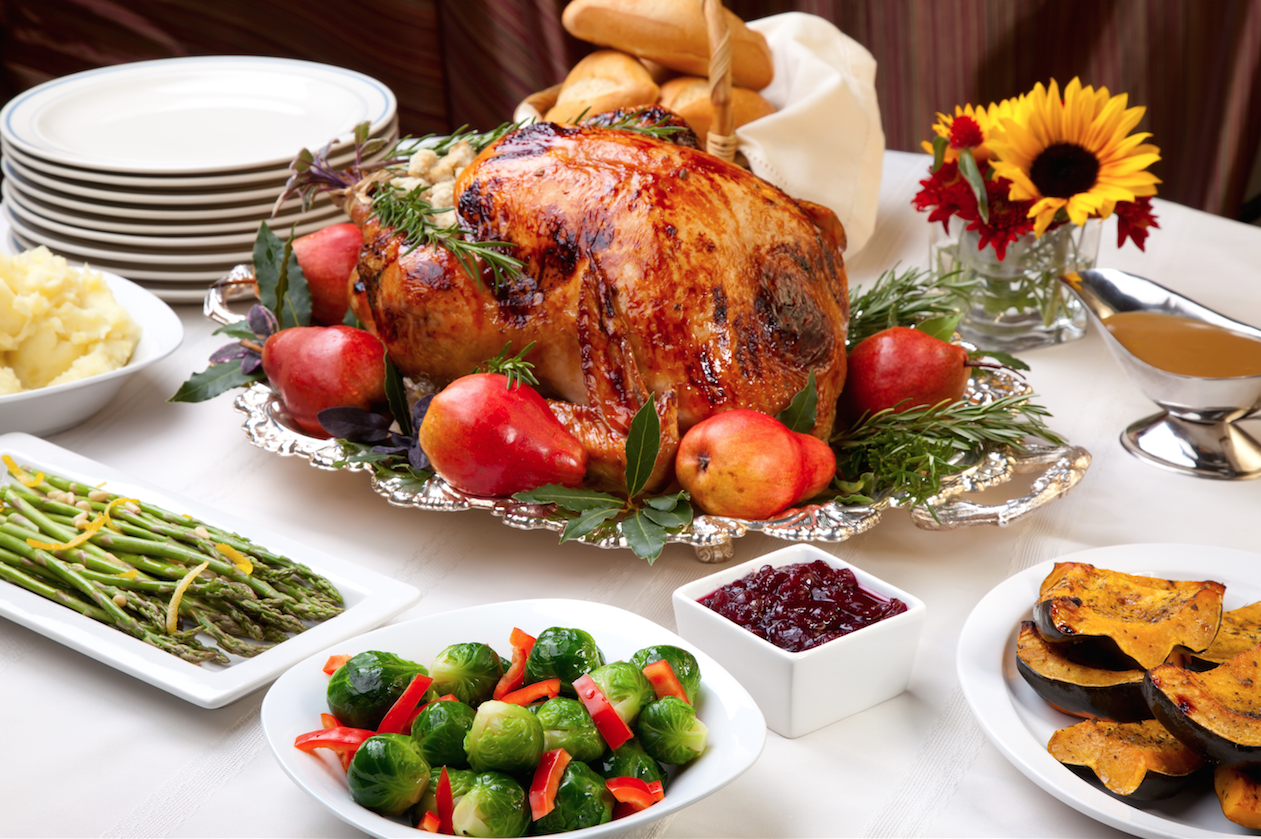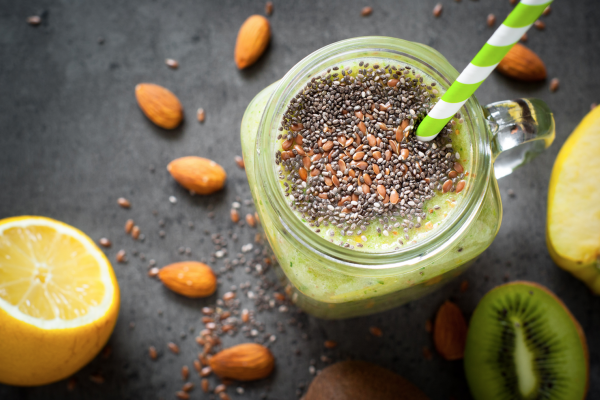Tips, recipes, nutritional facts and more!
According to research from the Calorie Control Council, the average Thanksgiving dinner contains around 3,000 calories (and that’s not even including the appetizers and drinks you may consume)! Eating a full day’s worth of calories for just one meal can leave you feeling sluggish, bloated and guilty. The following tips and healthier recipes can help you manage your waistline and maintain your overall health while still enjoying the food and family time.
Portion Control: The biggest challenge many people face at Thanksgiving dinner is portion control. There are so many delicious dishes to pick from that not only do we overload our plates, but often times we go back for seconds. Aim for smaller portions and you’ll still be able to have a little bit of everything. Moderation is key; create a colorful plate filled with a variety of foods.
Turkey: A large protein-rich bird is the staple of any Thanksgiving dinner. Turkey can be a great low-fat protein choice if you choose your helping carefully. This Thanksgiving, select a carving of white meat over dark meat. Three ounces of white meat only has 115 calories and less than one gram of fat whereas the same amount of dark meat contains 140 calories and 4.5 grams of fat.
Green Bean Casserole: Green bean casserole is typically made with cream of mushroom soup and topped with fried onions. A better way to get your greens is to steam the beans and top them with slivered almonds. If you don’t want to completely disregard the traditional green bean casserole, experiment with this heathier version.
Sweet Potato Casserole: Sweet potatoes offer a variety of nutrients, but they lose that nutritional value with the addition of butter, brown sugar and marshmallows. This healthy sweet potato casserole uses savvy ingredient swaps to offer a lighter version of the popular Thanksgiving side dish.
Mashed potatoes: Mashed potatoes are usually made with large amounts of butter, cream and milk. They’re then topped with more butter, salt and gravy when they hit the table. In addition to steering clear of fattening condiments, try some new mashing-methods. Use skim milk and light butter in your recipe instead of heavy cream and salted butter. For added fiber, leave the skins on the potatoes when you mash! Finish off with crushed garlic and Italian seasoning for taste and top with fat-free sour cream or fat-free Greek yogurt.
Stuffing: While traditional stuffing is generally loaded with bread and carbohydrates, lighter substitutions can be made. Replace the pork sausage with a turkey substitute or remove the sausage all together. Use light or whole-wheat bread and add in lots of fresh veggies. Here’s one stuffing recipe with lighter ingredients.
Gravy: Canned gravy may have fewer calories but it is full of added salt and sugar. Homemade gravy is usually made from pan dripping, which makes it a high calorie, high fat topping for your meal. What to do? Use less. Moderation is best.
Pumpkin Pie: A slice of this beloved dessert can run you 300-400 calories, not counting the whipped topping or ice cream! To cut down on sugar and calories, skip the crust or try this lower calorie version. Top it off with fat-free vanilla yogurt.
While one day of unhealthy eating won’t destroy your overall health and wellness goals, it is always a good idea to choose healthy, balanced options as often as possible.
To keep your loved ones safe, brush up on your food safety tips before you start preparing this year's feast.


